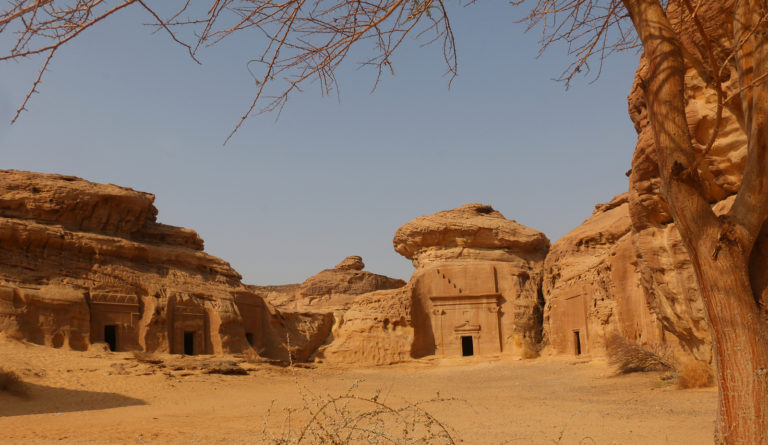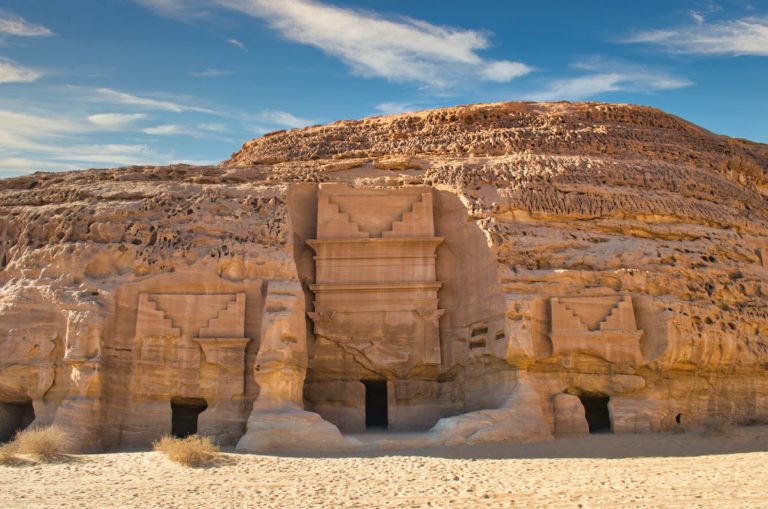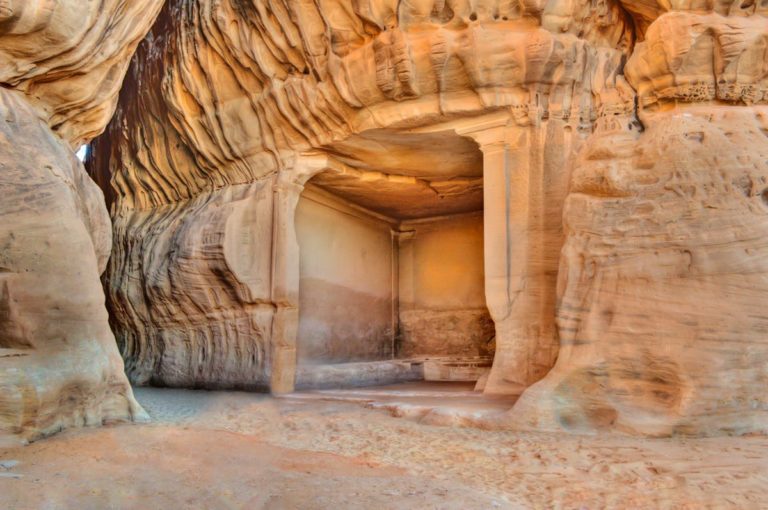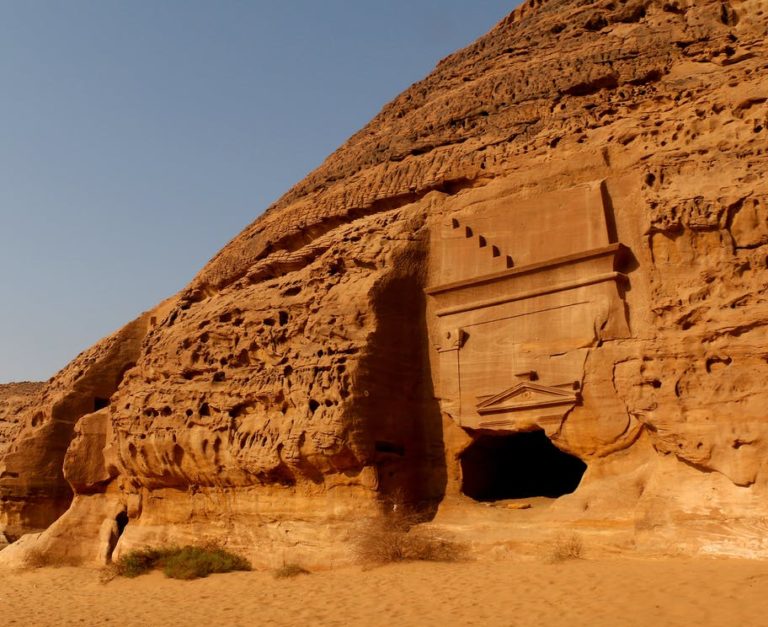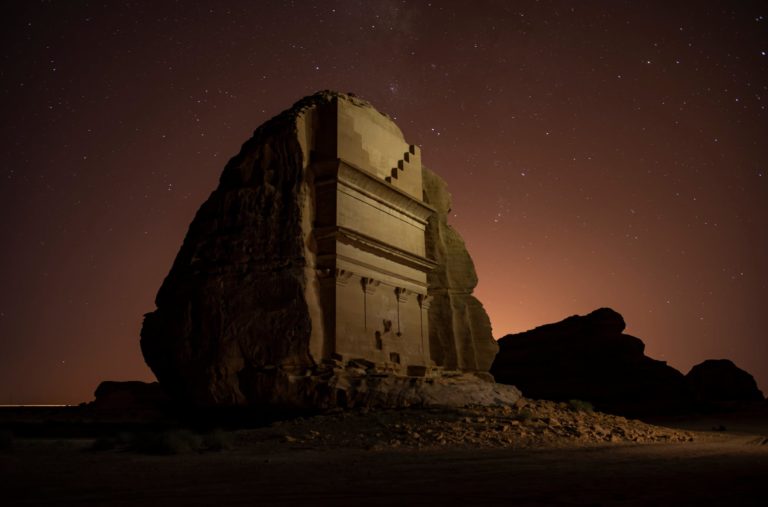Tucked in a hidden gem, in a land not so far away, lies the Hegra Site (Madain Saleh) in AlUla, Saudi Arabia. This site was once home to the Nabataean civilization and is Saudi’s 1st UNESCO Heritage Site. Like the rock structures and carvings of Petra, are these well-preserved monumental tombs with elaborately decorated facades that date back from 1st century BC to 1st century AD. Pictures and videos are completely different, compared to the feeling of standing in front of the grandeur of these mystical giants, pillars of civilizations we have only heard about before.
The site of Hegra is located at a meeting point between various civilizations of late, on a trading route between the Arabian Peninsula, the Mediterranean and Asia. The Nabataeans were very well known for trading and transporting frankincense and myrrh, two resins that are still traded till this day. It was said that they also exported balsam and bitumen. They built monumental tombs in Petra and Hegra as well as other public structures such as theatres and baths. The main feature of the site are the monumental tombs, some of them etched with Nabatean Aramaic inscriptions, bearing the owners name, Their legal rights, and occasionally the mason’s name.
It is worth mentioning that Ancient Nabataean is rooted in Aramaic, one of the world’s first-known written languages, which was considered the international tongue of trade in the 1st millennium BCE. Research has shown that the Arabic script did not evolve from native Arabian scripts, but in fact from the Nabatean Aramaic script. The Nabataean city was abandoned during the pre-Islamic period, but even then the route continued to play its role for the caravans, up to its modernization with the construction of the Hejaz Railway by the Ottoman Empire at the start of the 20th century, which stretched from the Levant region to Medinah and the Holy City of Mecca.
A 2-hour tour through Hegra’s breathtaking route is now available, opening a path to discovery transporting you back in time through the footsteps of civilizations old. The first stop takes you to the Hijaz Railway, which was built in 1900 and used as a more modern way for pilgrims to travel. Followed by passing through Al Diwan, pronounced Dee-Wan. Situated right in the middle of Jebel Ithlib is a natural slit called the Siq, a natural narrow passageway through the mountains. At its entrance, is a chamber with three stone benches that served as a place for sacred feasts and banquets. Its been noted that its large entrance suggests these feasts extended into the open space in front of it.
Continue your journey of discovery at Jabal AlAhmar (The Red Mountain) where a necklace made of date stones was discovered in a tomb excavated in recent years. Among this tour is a chance to explore Jabal AlBanat (The Girls Mountain) which is said to be one of the largest cluster of tombs, which can all be explored on camel or by foot. the Qasr Al-Farid (The Unique Palace) is one of the most famous and truly breathtaking Nabatean tombs in Hegra. Characterized by an exceptionally large northern facade, which was called Al-Farid meaning “the unique” because it is an independent rock. Make sure you factor in enough time to watch the play, Tomb of Malkiyun the Diviner (Qasr AlSania), which spotlights Nabataean society and their ways of life. You might also have a chance to interact with the actors, as the audience becomes part of the narrative. With impressive sets, special effects, and some surprises, this 20-30-minute play is must-see.
In a nutshell, AlUla is a completely breathtaking place, filled with an incredibly rich culture and history, exceptional views, lush palm tree groves and beautiful weather. Its nightly skies bare constellations as far as the eyes can see. The locals are incredibly hospitable, welcoming their visitors with open arms, armed with knowledge, grace and pride. Wherever you are in the world, make sure you add AlUla to your bucket list, it is one trip that will surely leave one speechless, fulfilled, and serene, or in the words of the famous traveler Ibn Battuta – “he who enters it is lost, and he who leaves it is born.”

